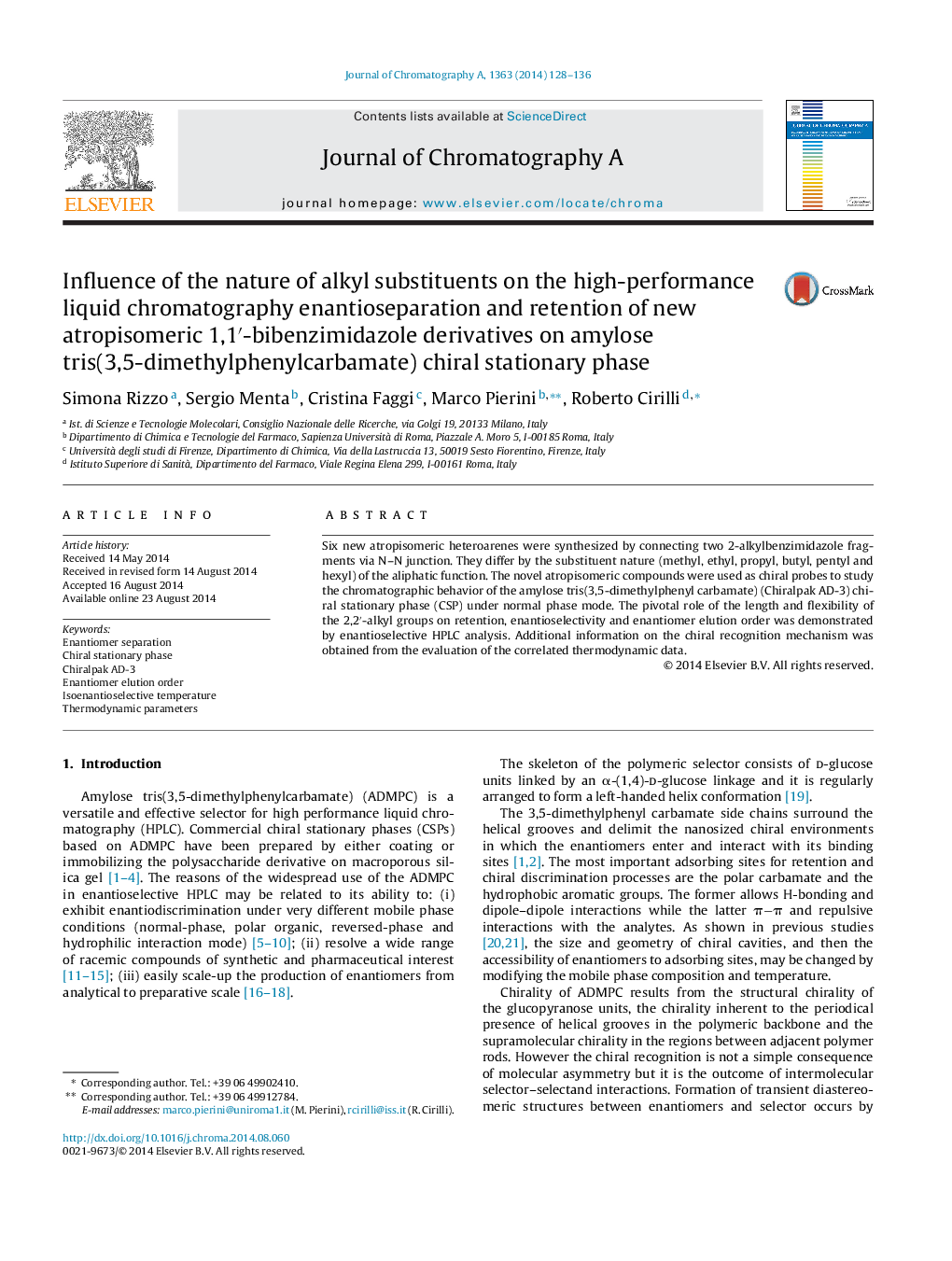| Article ID | Journal | Published Year | Pages | File Type |
|---|---|---|---|---|
| 1199165 | Journal of Chromatography A | 2014 | 9 Pages |
•Six new 1,1′-bibenzimidazoles derivatives were synthesized.•They differ by the substituent nature (methyl, ethyl, propyl, butyl, pentyl and hexyl).•The compounds were used as chiral probes to study the HPLC behavior of the AD-3 CSP.•The pivotal role of the alkyl groups on retention and enantioselectivity was demonstrated.•The thermodynamic aspects of enantioseparations were investigated.
Six new atropisomeric heteroarenes were synthesized by connecting two 2-alkylbenzimidazole fragments via N–N junction. They differ by the substituent nature (methyl, ethyl, propyl, butyl, pentyl and hexyl) of the aliphatic function. The novel atropisomeric compounds were used as chiral probes to study the chromatographic behavior of the amylose tris(3,5-dimethylphenyl carbamate) (Chiralpak AD-3) chiral stationary phase (CSP) under normal phase mode. The pivotal role of the length and flexibility of the 2,2′-alkyl groups on retention, enantioselectivity and enantiomer elution order was demonstrated by enantioselective HPLC analysis. Additional information on the chiral recognition mechanism was obtained from the evaluation of the correlated thermodynamic data.
